Tuesday, February 28th 2017

NVIDIA Announces the GeForce GTX 1080 Ti Graphics Card at $699
NVIDIA today unveiled the GeForce GTX 1080 Ti graphics card, its fastest consumer graphics card based on the "Pascal" GPU architecture, and which is positioned to be more affordable than the flagship TITAN X Pascal, at USD $699, with market availability from the first week of March, 2017. Based on the same "GP102" silicon as the TITAN X Pascal, the GTX 1080 Ti is slightly cut-down. While it features the same 3,584 CUDA cores as the TITAN X Pascal, the memory amount is now lower, at 11 GB, over a slightly narrower 352-bit wide GDDR5X memory interface. This translates to 11 memory chips on the card. On the bright side, NVIDIA is using newer memory chips than the one it deployed on the TITAN X Pascal, which run at 11 GHz (GDDR5X-effective), so the memory bandwidth is 484 GB/s.
Besides the narrower 352-bit memory bus, the ROP count is lowered to 88 (from 96 on the TITAN X Pascal), while the TMU count is unchanged from 224. The GPU core is clocked at a boost frequency of up to 1.60 GHz, with the ability to overclock beyond the 2.00 GHz mark. It gets better: the GTX 1080 Ti features certain memory advancements not found on other "Pascal" based graphics cards: a newer memory chip and optimized memory interface, that's running at 11 Gbps. NVIDIA's Tiled Rendering Technology has also been finally announced publicly; a feature NVIDIA has been hiding from its consumers since the GeForce "Maxwell" architecture, it is one of the secret sauces that enable NVIDIA's lead.The Tiled Rendering technology brings about huge improvements in memory bandwidth utilization by optimizing the render process to work in square sized chunks, instead of drawing the whole polygon. Thus, geometry and textures of a processed object stays on-chip (in the L2 cache), which reduces cache misses and memory bandwidth requirements.Together with its lossless memory compression tech, NVIDIA expects Tiled Rendering, and its storage tech, Tiled Caching, to more than double, or even close to triple, the effective memory bandwidth of the GTX 1080 Ti, over its physical bandwidth of 484 GB/s.NVIDIA is making sure it doesn't run into the thermal and electrical issues of previous-generation reference design high-end graphics cards, by deploying a new 7-phase dual-FET VRM that reduces loads (and thereby temperatures) per MOSFET. The underlying cooling solution is also improved, with a new vapor-chamber plate, and a denser aluminium channel matrix.Watt-to-Watt, the GTX 1080 Ti will hence be up to 2.5 dBA quieter than the GTX 1080, or up to 5°C cooler. The card draws power from a combination of 8-pin and 6-pin PCIe power connectors, with the GPU's TDP rated at 220W. The GeForce GTX 1080 Ti is designed to be anywhere between 20-45% faster than the GTX 1080 (35% on average).The GeForce GTX 1080 Ti is widely expected to be faster than the TITAN X Pascal out of the box, despite is narrower memory bus and fewer ROPs. The higher boost clocks and 11 Gbps memory, make up for the performance deficit. What's more, the GTX 1080 Ti will be available in custom-design boards, and factory-overclocked speeds, so the GTX 1080 Ti will end up being the fastest consumer graphics option until there's competition.
Besides the narrower 352-bit memory bus, the ROP count is lowered to 88 (from 96 on the TITAN X Pascal), while the TMU count is unchanged from 224. The GPU core is clocked at a boost frequency of up to 1.60 GHz, with the ability to overclock beyond the 2.00 GHz mark. It gets better: the GTX 1080 Ti features certain memory advancements not found on other "Pascal" based graphics cards: a newer memory chip and optimized memory interface, that's running at 11 Gbps. NVIDIA's Tiled Rendering Technology has also been finally announced publicly; a feature NVIDIA has been hiding from its consumers since the GeForce "Maxwell" architecture, it is one of the secret sauces that enable NVIDIA's lead.The Tiled Rendering technology brings about huge improvements in memory bandwidth utilization by optimizing the render process to work in square sized chunks, instead of drawing the whole polygon. Thus, geometry and textures of a processed object stays on-chip (in the L2 cache), which reduces cache misses and memory bandwidth requirements.Together with its lossless memory compression tech, NVIDIA expects Tiled Rendering, and its storage tech, Tiled Caching, to more than double, or even close to triple, the effective memory bandwidth of the GTX 1080 Ti, over its physical bandwidth of 484 GB/s.NVIDIA is making sure it doesn't run into the thermal and electrical issues of previous-generation reference design high-end graphics cards, by deploying a new 7-phase dual-FET VRM that reduces loads (and thereby temperatures) per MOSFET. The underlying cooling solution is also improved, with a new vapor-chamber plate, and a denser aluminium channel matrix.Watt-to-Watt, the GTX 1080 Ti will hence be up to 2.5 dBA quieter than the GTX 1080, or up to 5°C cooler. The card draws power from a combination of 8-pin and 6-pin PCIe power connectors, with the GPU's TDP rated at 220W. The GeForce GTX 1080 Ti is designed to be anywhere between 20-45% faster than the GTX 1080 (35% on average).The GeForce GTX 1080 Ti is widely expected to be faster than the TITAN X Pascal out of the box, despite is narrower memory bus and fewer ROPs. The higher boost clocks and 11 Gbps memory, make up for the performance deficit. What's more, the GTX 1080 Ti will be available in custom-design boards, and factory-overclocked speeds, so the GTX 1080 Ti will end up being the fastest consumer graphics option until there's competition.

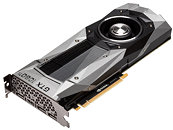

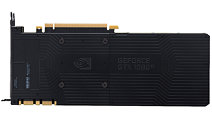
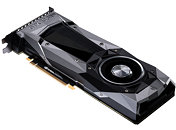
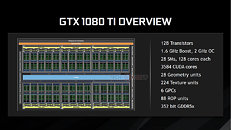

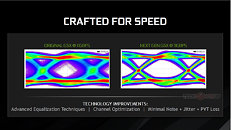


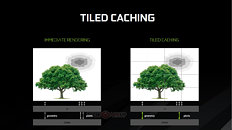
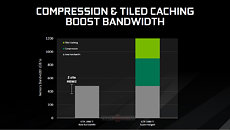


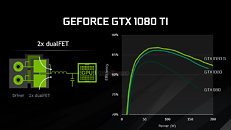
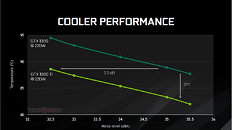


160 Comments on NVIDIA Announces the GeForce GTX 1080 Ti Graphics Card at $699
Still WAY out of my price range, but I'm glad it wasn't $800+, LOL.
Why does it look like it runs quieter the hotter it gets? Can that be right? Am I hallucinating?
The fan spins up to cool it down so noise increases.
Nice hack job
Few years back x70 card was around 370-420 @ launch ,now the gtx1070 is 480+ euro's wich is way to expensive
32.5 dBA @ 88°C
35.5 dBA @ 82°C
Well looky there. The hotter it runs the quieter the cooler is. So the fan slows down and makes less noise as the card heats up. And the fan speeds up and makes more noise as the card cools down. Yep...makes perfect sense!
"hey guys how do we charge more at a higher margin?
Let's just pull a ram chip off they'll still buy it. "
The X axis is Noise level increasing from left to right.
The Y axis is Temp increasing from bottom to top
For some reason they have the card starting at around 88c with only 32.5 dBA and the noise increasing as temps go up.
I found this interesting on these three cards:
1080 8GB 256-bit Bus width - very common.
1080ti 11GB 352-bit Bus width - this is uncommon on graphics cards.
Titan XP 12GB 384-bit Bus width - common on high end gpus like the 780ti and 980ti.